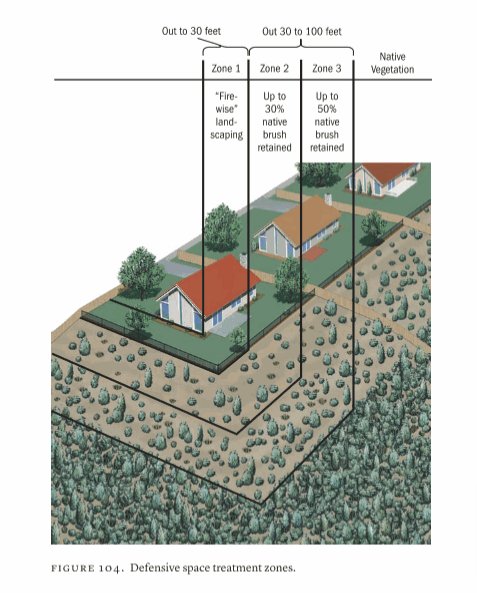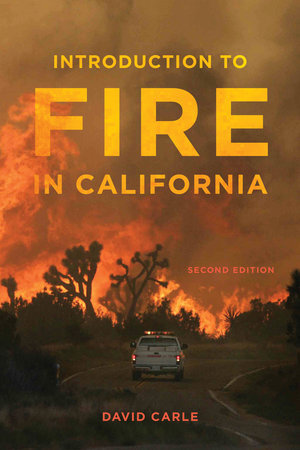By David Carle, author of Introduction to Fire in California, Second Edition
The following post is an adapted excerpt from Introduction to Fire in California, Second Edition
Could your house survive without firefighter protection, on its own? Do you know the fire-return interval in your area and where you fall in that regime? When was the last wildland fire to impact your neighborhood?
Fires are natural occurrences, but they become human-made disasters when unprepared people live in their path. The government has fire-fighting and fuel management responsibilities, but those who live on the edge of wildlands also have personal responsibilities. If humans handle those challenges the right way, they too might become a “fire-adapted species.”
Be prepared before a fire approaches. Tiny blowing embers are the most insidious source of house ignitions. Fire brands can be blown for miles. Even the tiniest of embers can ignite wood shingle roofs, enter attics through unscreened vents, settle beneath decks, burn leaf debris in rain gutters, or start fires in plants along the edges of homes that then will spread to the structure itself.“ Hardening the exterior of homes and buildings to keep out embers is essential.
Defensible space aims to reduce fire impacts and give your home the best odds of withstanding wildfire, on its own, without firefighter protection. The goals are lean, clean, and green:
- Lean. Break up contiguous fuels and eliminate ladder fuels by clearing space between plants, controlling the heights of shrubs, and pruning the lower limbs of trees.
- Green. Keep plants robust and well irrigated so they have good moisture content. This may include substituting certain plants with less-flammable alternatives.
- Clean. Remove the most flammable materials: the debris of fallen leaves and branches and dead material held in shrubs and trees.
In the first 30 feet, almost everything should be fireproof. Landscaping should be low, green, and regularly watered. Firewood stacks should be outside this 30-foot zone; a cord of dry firewood stacked more conveniently close is like piling 160 gallons of gasoline beside your house.

From 30 feet to 100 feet (or greater distances, depending on slopes and local winds), plants should be thinned, cleared of dead material, and regularly watered, so fuel moisture levels are high. Waiting to hose down plants (or roofs) as a fire approaches may be ineffective and may not even be possible, should water pressure fail.
But “do not go nude, go thin” (as the San Diego County Fire Safe Council suggests). Landscapes need not and should not be entirely cleared. The law does not mandate clearing to bare ground around residences or wholesale clearance of low-growing native shrubs and trees. Within treated 30-foot and 100-foot zones, it does allow for individual trees or other plants, including native ones, that are pruned and maintained so that they will not rapidly transmit fire. Since plants increase in size each growing season and, portions of them regularly die. Preparing and maintaining defensible space is a never-ending same-time-next-year story.
Now is the time to prepare an emergency evacuation supply bag and develop an evacuation plan. Make sure all family members understand the possible routes for evacuation and where the family should meet, if separated. Each driver needs to practice operating the manual lever to your electric garage door opener so that the door can be lifted even when power is off. Where is the shutoff valve on your propane tank or natural gas meter? The time to learn these things is long before a fire approaches.
Adapting to fire in our environment, exacerbated by the global climate crisis, requires an urgent response to the atmospheric and weather changes that are fueling extreme fire behavior and mega-sized wildfires. We must reduce greenhouse gas emissions by replacing fossil fuel consumption with renewable energy and transportation systems, and plan to adapt to changes that have already become inevitable. We can learn and teach fire ecology concepts, and become informed citizens, aware of our places in the natural landscape. Be leery of headlines that shout “Destruction!” and “Devastation!” wherever wildland fires have burned. Such terms do apply when fires cross into developed zones, but are often misleading about the effects of fire on the burned wildland itself.
Eliminating fire is not possible. Fire in the environment can only be postponed, and it is our task to become well-prepared, fire-adapted Californians.

